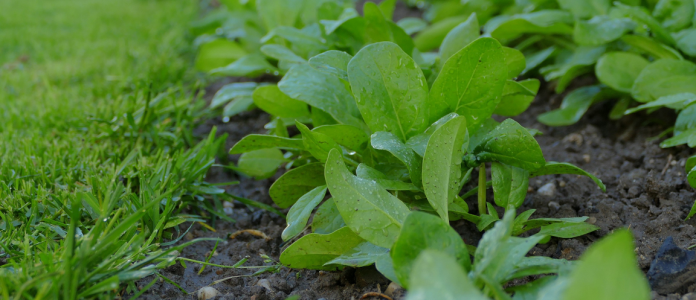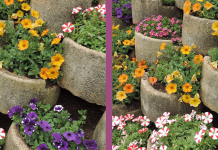Any veggie patch that receives at least six hours of sun a day, or more, and is fairly sheltered from the cold can yield as much as a summer garden, if not more so.
The range of winter veggies include deliciously sweet garden peas, the superfoods kale and broccoli, Swiss chard and many different varieties of lettuce. Cabbage is a winter staple and adventurous gardeners can consider growing Brussels sprouts and kohlrabi. Root veggies like turnips, radishes, parsnips, beetroot and carrots can also be sown in March.

Nourish the soil!
While you are waiting for summer veggies to come to an end, start sowing winter veggies in seed trays. This also allows time to rework garden beds in preparation for planting out winter seedlings in April.
Nutrients are continuously taken out of the soil by previous crops and for successive crops to thrive, nutrients need to be replaced and organic matter added, such as compost to boost the soil’s carbon content.
Because it is hard to guarantee the balance of carbon and nitrogen in compost, it’s a good idea to add a carbon-based soil conditioner like Madumbi Humate Carbon that is available in liquid form or as granules.
Madumbi Humate Carbon ‘feeds’ the soil as well as the micro-organisms it contains. Add it with the compost as a drench or sprinkle the granules over the soil.
Growing from Seed

March and April are the best months to sow winter veggies from seed. It is generally easier and more successful to sow seeds in seeding trays and then plant the seedling out into the garden.
Wash seed trays in hot water and Jik or another anti-bacterial wash. Fill the tray with a seedling mix and press down lightly . Moisten the seedling mix with a drench of Madumbi’ s V12 Initiate for growth, Eco-T for healthy roots and Carbon Humate granules for additional fertility. Dilute 5g of each together in a 5-litre watering can.
Sow the seed at the depth stipulated on the seed packet, press down lightly and water again with the drench. Place the seed tray in a warm, sheltered place in light shade.
Strong start for seedlings

When it’s time to plant or transplant seedlings use the same drench that was used at the time of sowing. The carbon may be omitted.
Good to know:
Madumbi Eco-T contains a natural, beneficial fungus which grows symbiotically with plant roots to minimise root disease. It acts as a fungal inoculant, reducing the risk of root disease, which aids root development and improves germination.
Madumbi V12 Initiate is a blend of micro-nutrients, particularly boron (B), silica (S) and calcium (C), that not only boosts growth but reduces transplant stress.
To make the drench mix 2.5g g Eco-T and 50 ml V12 Initiate into a 5 litre watering can. To that can be added 5ml Humate Liquid. The dose is1 cup/250ml per plant. Repeat the drench two weeks after planting or transplanting.
Monthly maintenance

Winter vegetables, especially brassicas, need to be well established before the winter cold sets in. Feed once a month with Madumbi V12 Multi as a drench or foliar feed. It is an “all-in-one” plant tonic, containing a blend of nutrition including macro and micro-nutrients that stimulates growth and plant wellness. Use 50 ml in 5 litres of water.
It can be alternated with AgriSil K50 a potassium silicate liquid fertiliser. Silica strengthens plant cells which makes plants better able to withstand cold and light frost, although is still necessary to protect tender veggies like lettuce with frost cloth.
Buy online: Madumbi Humate Carbon (granules or liquid), Eco-T root protection and the Plant Vitality range V12 Initiate, V12 Multi and AgriSil K50, can be ordered online. Andermatt Madumbi products are registered by Act 36 of 1947 and may only be used as per the label. Please visit this website for details and to buy online.
Text and images: Alice Coetzee






